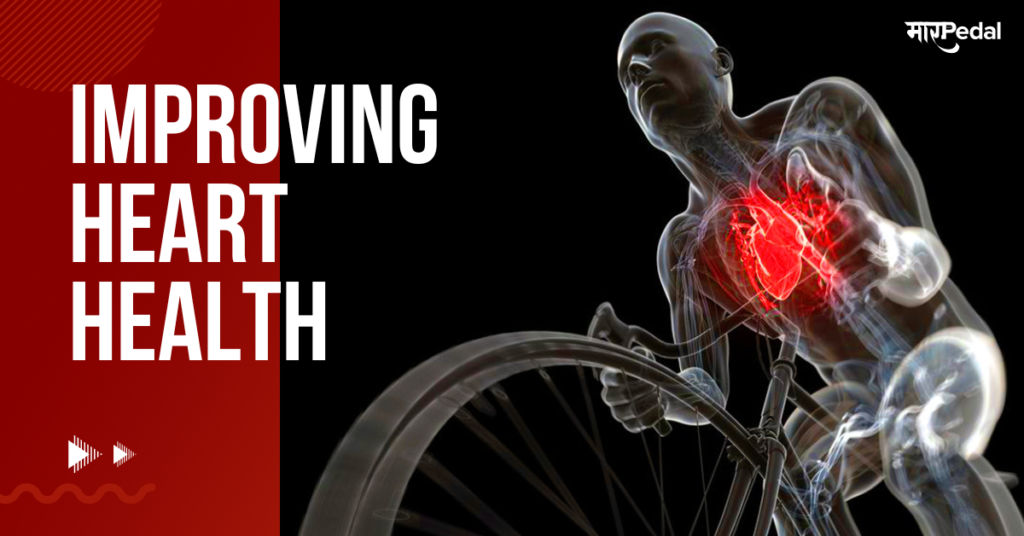
Are you considering adding cycling to your daily routine? If that’s the case, you’re not alone.
Cycling is a low-impact aerobic exercise that has numerous advantages. It also varies in intensity, making it appropriate for all skill levels. Cycling can be used as a mode of transportation, a recreational activity, or a competitive sport.
Cycling is one of the top stress-busting sports, according to a 2018 study published in The Lancet with over one million participants.
Cyclists had 21% fewer days of poor mental health than non-cyclists. This was only 22% lower than team sports and higher than other aerobic and gym activities.
Simply grouping your rides can provide you with the social benefits of a team activity while increasing the number of pleasant days you have.
People are discovering the numerous benefits of cycling on a daily basis, both for their own health and well-being and for the environment.
Cycling daily has numerous and far-reaching benefits, whether you want to improve your physical fitness, reduce your weight, or simply save money.
In this article, we’ll look more closely at some of the top 5 benefits of cycling daily and discuss why it should be considered a daily activity.
| Benefit | Description |
| Improved physical health | Regular cycling can help to improve cardiovascular fitness, strengthen muscles, and reduce the risk of chronic conditions such as obesity, heart disease, and diabetes. |
| Environmental benefits | Cycling generates zero emissions and can help to reduce air pollution and greenhouse gas emissions. It can also help to conserve energy and preserve natural resources. |
| Cycling to work | Cycling can help you save money on things like gas, parking, and car maintenance. |
| Social benefits | Cycling can provide opportunities to meet new people, bond with friends and family, and build a sense of community. |
| Mental health benefit | Cycling has been shown to have a number of mental health benefits, including reducing stress and improving mood. |
1. Health benefits of cycling 15 or 30 minutes a day:

Reducing the risk of heart disease and developing cardiovascular endurance are two ways that regular cycling can assist in improving heart health.
Cycling is a low-impact activity that is suitable for people of all ages and fitness levels, and it can be an especially beneficial form of exercise for those who have joint issues or other conditions that limit their ability to engage in high-impact activities.
Exercise can help lower stress hormones like cortisol while also increasing the production of endorphins, which are chemicals that act as natural pain relievers and mood elevators.
Riding a bicycle on a regular basis, especially at a high intensity, can help lower your body fat levels and thus reduce belly fat.
Additional research indicates that combining sprint and strength training with regular cycling may increase your height, metabolism, and muscle mass, allowing you to burn more calories even at rest.
Maintaining a healthy weight, following a healthy diet, and cycling for exercise all benefit you and reduce your cancer risk. Researchers examined over 12,000 men in a 2015 study published in the Journal of the American Medical Association. They discovered that as people approached middle age, those who were physically fit had a lower risk of lung and colorectal cancer.
2. Environmental benefits of cycling daily:

Reduces air pollution: Because cycling produces no emissions, cycling every day can help reduce the pollution caused by the transportation sector.
Reduces traffic: Increasing the number of cyclists can help to reduce traffic, resulting in fewer car trips and less pollution.
Natural resources are saved: Cars require a large number of natural resources, such as petrol or oil and rubber, to manufacture and maintain. Cycling every day can help to protect these resources.
Reduce carbon footprint: By riding your bike whenever possible, you can reduce your carbon footprint. Recent European research discovered that commuting by bike rather than car once a day reduces your transportation carbon footprint by 65%.
Parking: One additional benefit is that you won’t have to compete for a parking space in busy cities.
3. Benefits of cycling to work:

Cycling to work has numerous health benefits, particularly if you commute by bike. Some of the most important ones are
No petrol fees: One of the most expensive aspects of owning a car is the cost of gasoline. You can completely eliminate this cost by cycling every day.
Low maintenance costs: Because bicycles require far less maintenance than automobiles, you can save money on items such as oil changes and tune-ups.
No parking fees: Parking in many big cities (Delhi, Mumbai, and Pune) can be expensive, especially in congested areas. You can save money on parking by cycling.
No gym membership: If you exercise on your bike, you can save money on a gym membership.
4. Social benefits of cycling on an everyday basis:

Cycling has so many social benefits, including the opportunity to meet new people and bond with new friends. Here are a couple of examples:
Meeting new people: Cyclists often form social groups, either informally or through organized rides or clubs. These groups can be a great way to meet new people with similar interests.
Building community: Cycling can help to build community, both through organized group rides and individual rides. Group rides and organized events, for example, can bring people from different areas together.
Participating in rides, such as working to improve ride experience or promoting cycling to work as a valid alternative, can also help to build community and a shared vision for the future.
5. Mental health benefits

Cycling can help relieve stress, depression, and anxiety. When cycling, focusing on the road or your cadence can help you develop concentration and awareness of the present moment. This may help divert your attention from the mental chatter of your day.
Get on your bike for at least 30 minutes if you are feeling lethargic, listless, or like your brain is moving slowly.
This is supported by scientific evidence. One study discovered that biking outside improved cognitive functioning and well-being in older adults.
Exercise causes the release of endorphins in your body, which makes you feel better while lowering your stress levels. According to the findings of the previous study, exercising outside only amplifies these effects.
Exercise improves self-esteem, depression, anxiety, and stress, but the nature of cycling is one of the most effective activities for the heart and brain.
This table provides an overview of key body parts that can benefit from cycling.
| Body Part | Benefits |
| Legs | Cycling can help to improve and tone the muscles in the legs, including the quadriceps, hamstrings, and calves. |
| Glutes | Cycling can help to strengthen and tone the muscles in the buttocks. |
| Core | strengthens the core muscles, including the abs and lower back. |
| Heart and lungs | Cycling can improve cardiovascular fitness and strengthen the heart and lungs. |
Overall, cycling can provide a full-body workout and benefit a variety of muscles and body systems.
Concussion
In conclusion, cycling is a great way to improve overall health and wellness. It is a low impact form of exercise that can be done in a variety of locations and at varying levels of intensity.
Cycling can also assist to reduce pollution and save money on petrol costs. Finally, cycling is an excellent approach to becoming in shape and improving both mental and physical health.
Cycling is a fun way to stay healthy and connected to your surroundings.
Regardless of how you ride a bicycle, enjoy the satisfaction that comes from improving your fitness while having fun, and don’t forget to wear a helmet.
Frequently Asked Questions
What are the top 10 Benefits of Cycling for Kids?
Cycling is the best alternative to screening on time, Improves flexibility, Increases self-confidence, Promotes healthy habits, Encourages creativity, Helps to build teamwork skills enhances spatial awareness, increases endurance, improves sleep quality, and increases focus and concentration.
What are the unexpected benefits of cycling?
Improved sleep, a lower risk of injury, increased creativity, better relationships, improved work performance, and increased self-confidence
Some benefits of cycling during pregnancy?
Cycling has a number of mental health benefits, including stress reduction and mood enhancement. This is especially important during pregnancy when hormone fluctuations and other changes can have an impact on mood.
Cycling can be done throughout pregnancy, depending on the individual’s fitness level and the advice of their healthcare provider.
Does cycling reduce the tummy?
Yes, cycling will work your core muscles as you try to maintain your balance and stability. So, regular cycling will result in a smaller tummy. Cycling works your cardiovascular system and burns calories, which can help you lose weight all over your body, including your belly.
Cycling can also help to strengthen your core muscles, which can aid in the reduction of belly fat. Cycling for weight loss is most effective when combined with a healthy, balanced diet.
What are the benefits of cycling in the morning?
Cycling in the morning has numerous health and well-being benefits. It can help improve your heart health by increasing blood flow and raising your heart rate, which can boost your energy levels for the rest of the day.
Morning exercise can also help you sleep better at night by improving your mental focus and clarity. Cycling in the morning can also help you manage your weight and reduce stress, providing you with a better overall sense of well-being.
While the benefits of morning exercise vary depending on the person, it can be a great way to start the day and set a positive tone for the rest of the day.






